
Our Bodies Are Not the Problem (detail), 2022
acrylic on canvas with wooden dowels and string, 133 × 149.5 cm
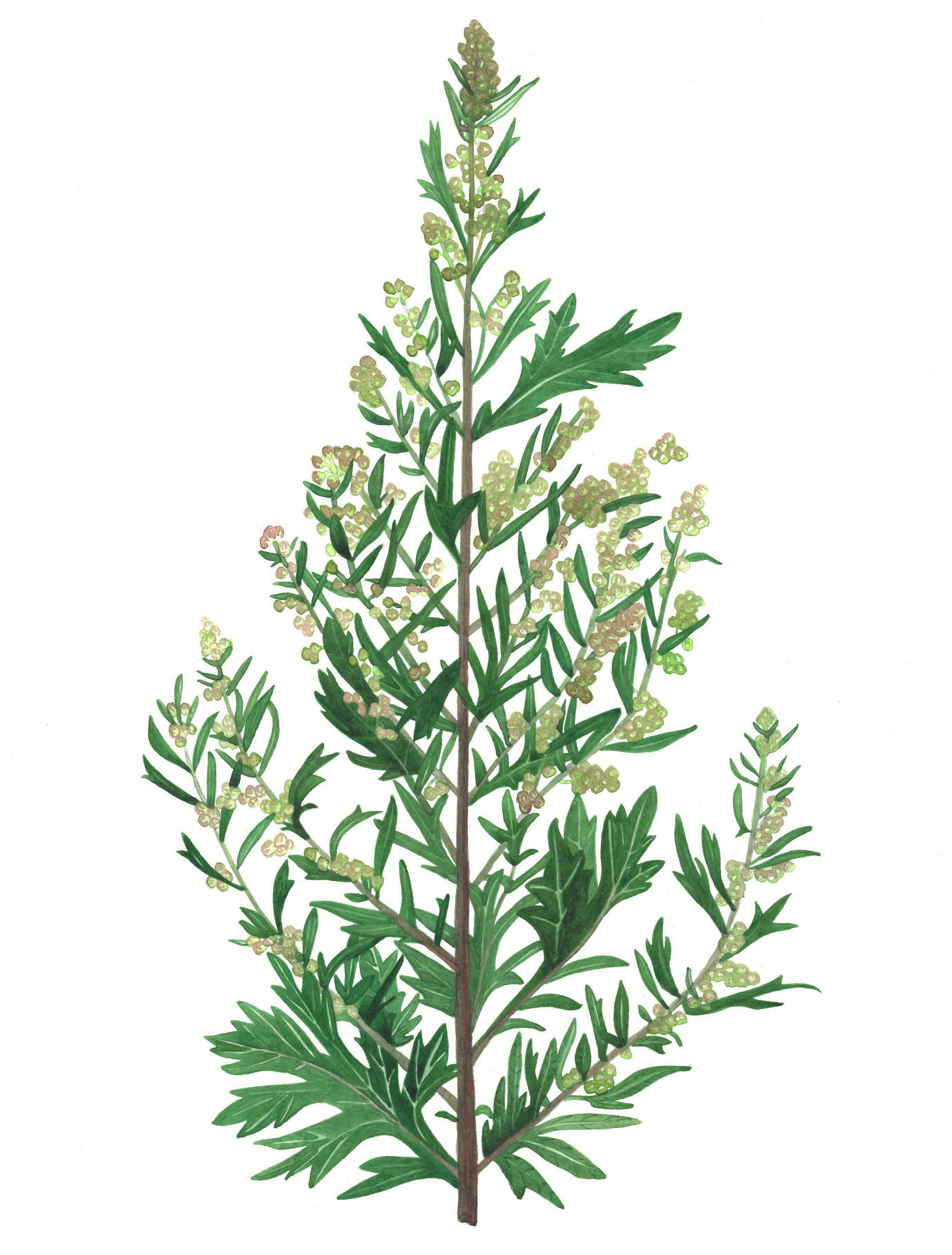
Bringing Down the Flowers (Mugwort), 2023
water colour on paper, 36 x 48cm
‘Hag Nag Harpy Hen’, 2023
solo show at Kalmar Konstmuseum, Sweden
‘Hag Nag Harpy Hen’ brings together work from several of my most recent projects, related to feminist and queer history and my research into women’s health activism. Many of the works focus on how communities have developed alternative systems to educate themselves about their bodies and health, countering the deficiencies of mainstream provision. Across components that include a new sound installation, as well as drawings and paintings, I highlight the relationship between ill health and structures of inequality.
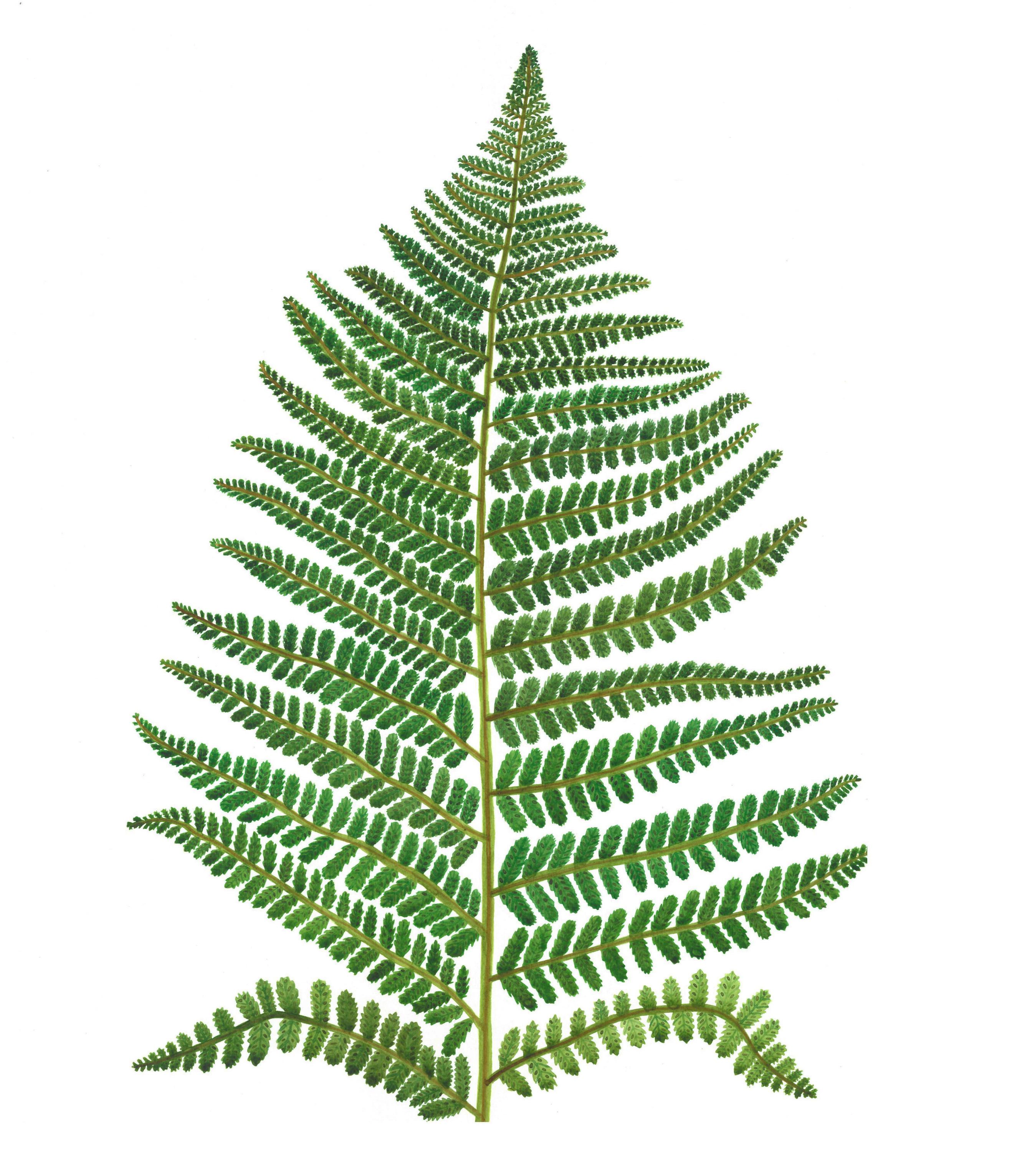
Bringing Down the Flowers (Male Fern), 2023
water colour on paper, 36 x 48cm

Bringing Down the Flowers (St John's Wort), 2023
water colour on paper, 36 x 48cm

Our Bodies Are Not the Problem, the Problem is Power, 2021
installation view with printed curtain, Kalmar konstmuseum, 2023
Our Bodies Are Not the Problem, 2021-22
printed curtain and acrylic paintings on canvas with wooden dowels and string
The exhibition begins with a series of painted diagrams, based on images from the various English language editions of the women’s health manual Our Bodies, Ourselves, dating from the 1970s until today, as well as the more recent Trans Bodies, Trans Selves. Although they are reminiscent of the instructional posters that one might find on the wall of a doctor’s office, the images reflect a broad set of issues related to women’s health. These range from reproductive health and abortion to domestic violence, self-defence, working conditions, trans experience and lesbian relationships. The book was first published in the USA by the Boston Women’s Health Book Collective in 1970 and has been revised, republished, and repurposed around the world. It came about as the result of Women’s Liberation workshops, in which women gathered to learn about their own bodies and how to demand their care needs, from a medical establishment that they viewed as paternalistic and condescending.

Our Bodies Are Not the Problem, 2022
acrylic on canvas with wooden dowels and string, 133 × 149.5 cm

Our Bodies Are Not the Problem, 2022
acrylic on canvas with wooden dowels and string, 133 × 149.5 cm

Our Bodies Are Not the Problem, 2022
acrylic on canvas with wooden dowels and string, 133 × 149.5 cm
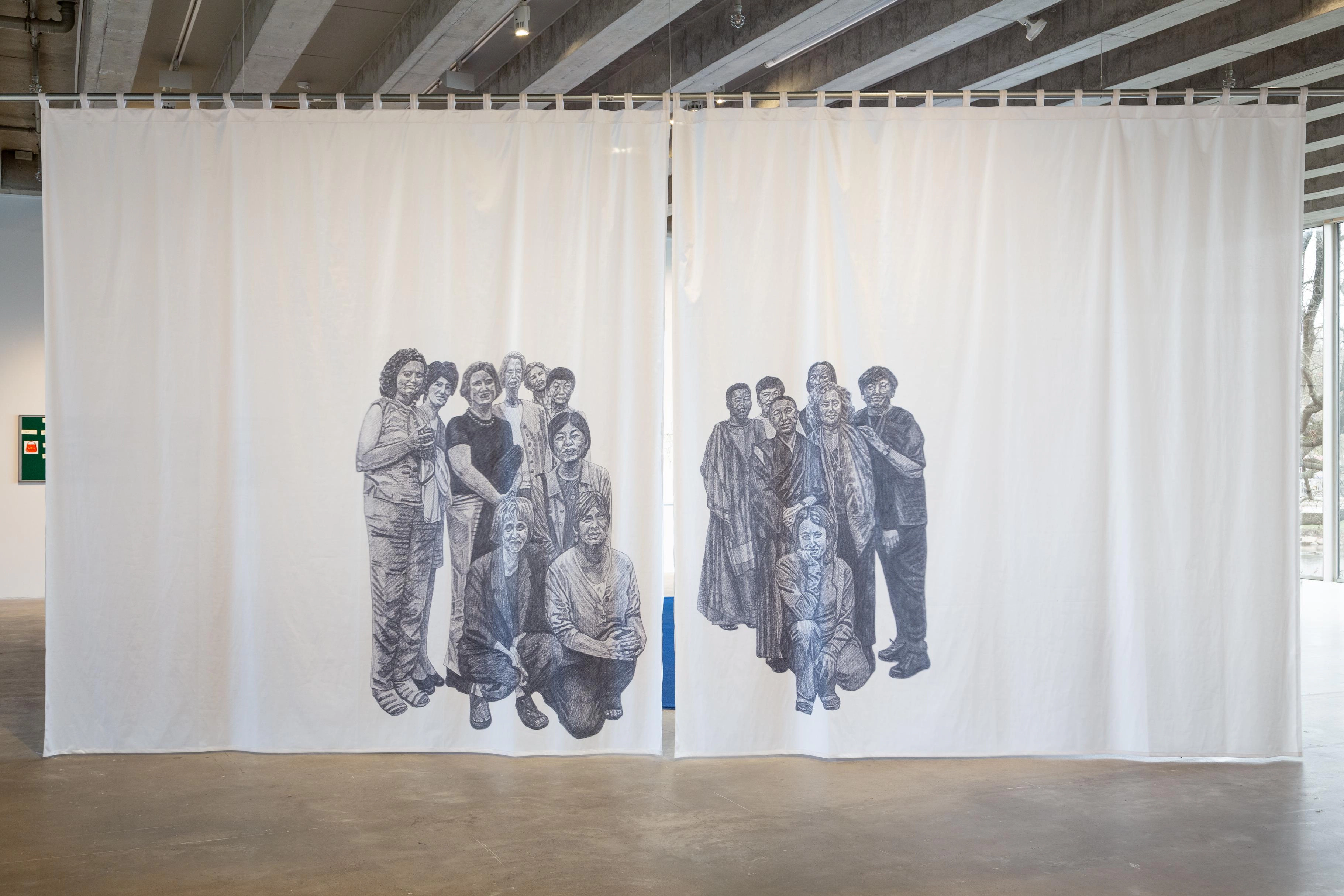
Our Bodies Are Not the Problem, the Problem is Power, 2021
installation view of printed curtain, Kalmar konstmuseum, 2023
A large printed curtain spans the room, featuring a life-sized drawing of some of the women associated with Our Bodies, Ourselves. Rather than focus on the US group that wrote the first version of Our Bodies, Ourselves, the curtain depicts women who have translated the book – a process that usually involves a complete rewriting each time, acknowledging the differing understandings of the relationship between health, the body and community across cultures.
Our Bodies Are Not the Problem is part of an ongoing project with Glasgow Women’s Library (GWL) – a feminist library and community space based in Scotland – and is based on my research in their archives.

Bringing Down the Flowers (Geranium), 2023
water colour on paper, 36 x 48cm

Bringing Down the Flowers, series of water colours on paper, 2023
installation view with vitrine, Kalmar Konstmuseum, 2023
Bringing Down the Flowers, 2023
series of watercolour paintings in vitrines
This series of watercolour paintings represent plants that were historically used by women to induce abortion. In style they are like the genteel flower paintings that were a popular hobby for women of the nineteenth century. I find the plants in various everyday urban places, including by the side of the road, in an underpass or at the local supermarket. Some will be familiar, but others can be poisonous if administered incorrectly.
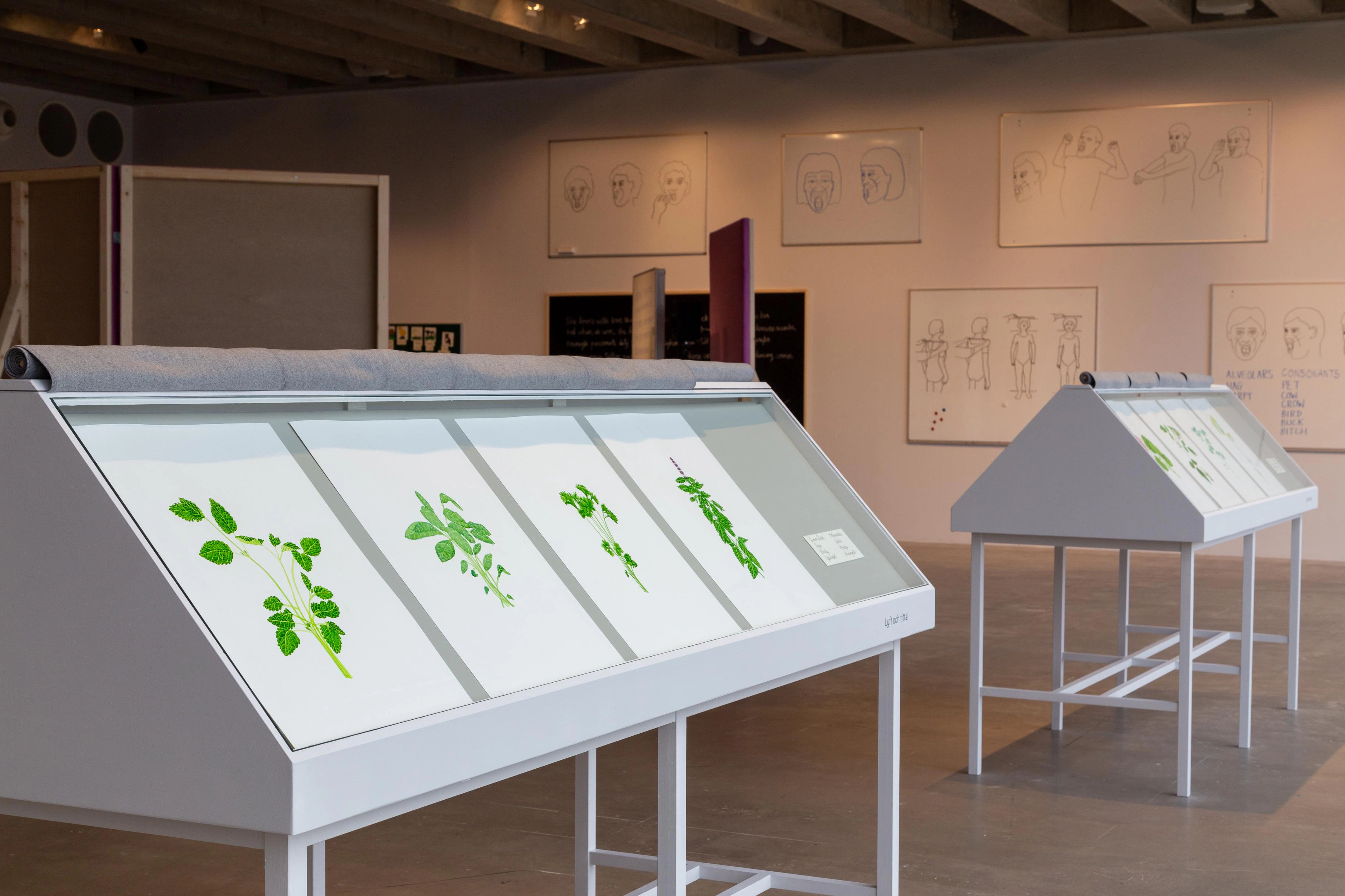
Bringing Down the Flowers, series of water colours on paper, 2023
installation view with vitrines, Kalmar Konstmuseum, 2023
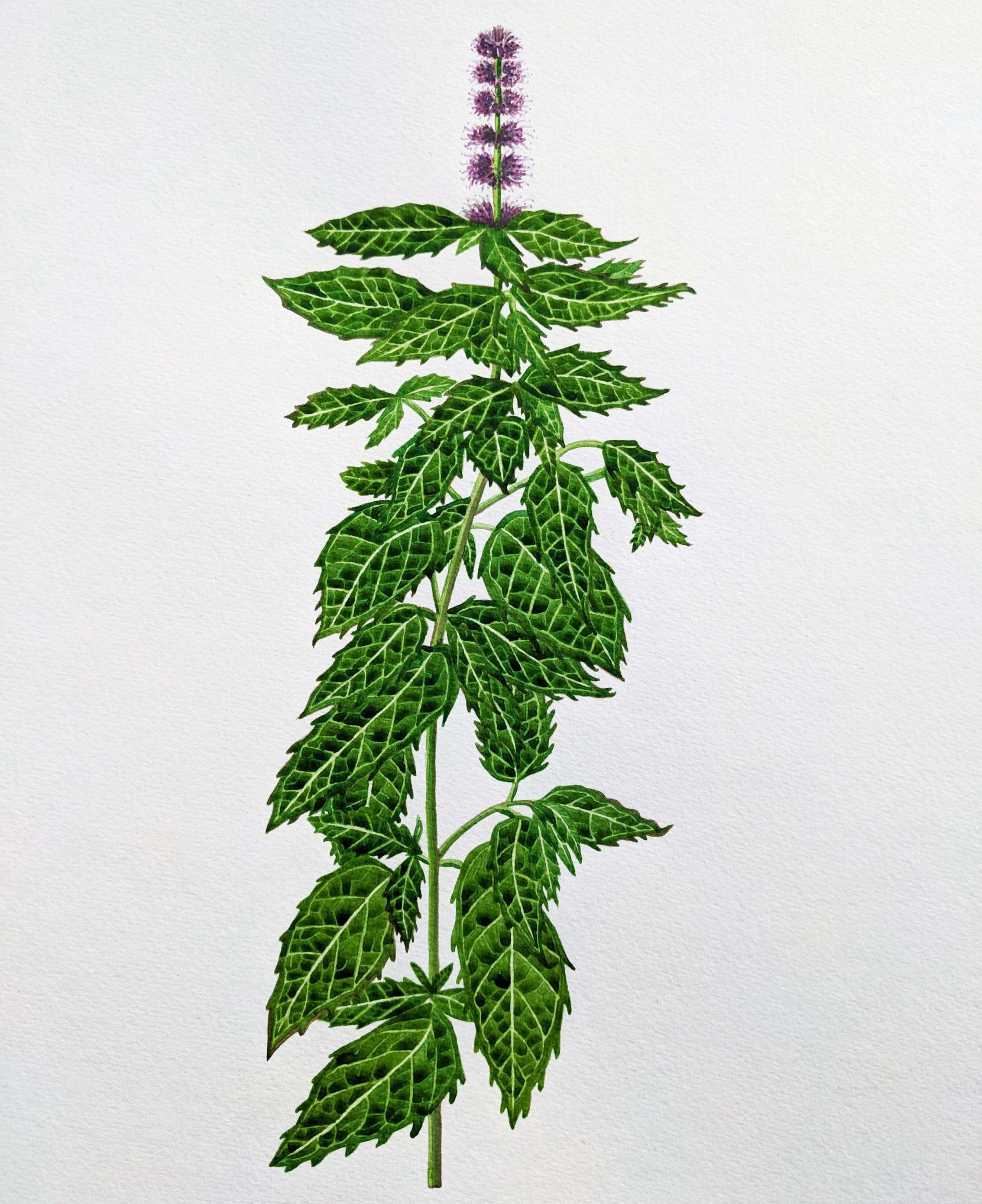
Bringing Down the Flowers (Spearmint), 2023
water colour on paper, 36 x 48cm

Bringing Down the Flowers (Tansy), 2023
water colour on paper, 36 x 48cm
The title Bringing Down the Flowers is a euphemistic expression – which apparently was used in the past to describe the process of inducing an abortion and bringing on menstruation. The paintings represent an unwritten 'catalogue' of hidden knowledge about female health, which would largely have been passed on orally between generations of women.

Bringing Down the Flowers (Raspberry Leaf), 2023
water colour on paper, 36 x 48cm

Bringing Down the Flowers (Rue), 2023
water colour on paper, 36 x 48cm
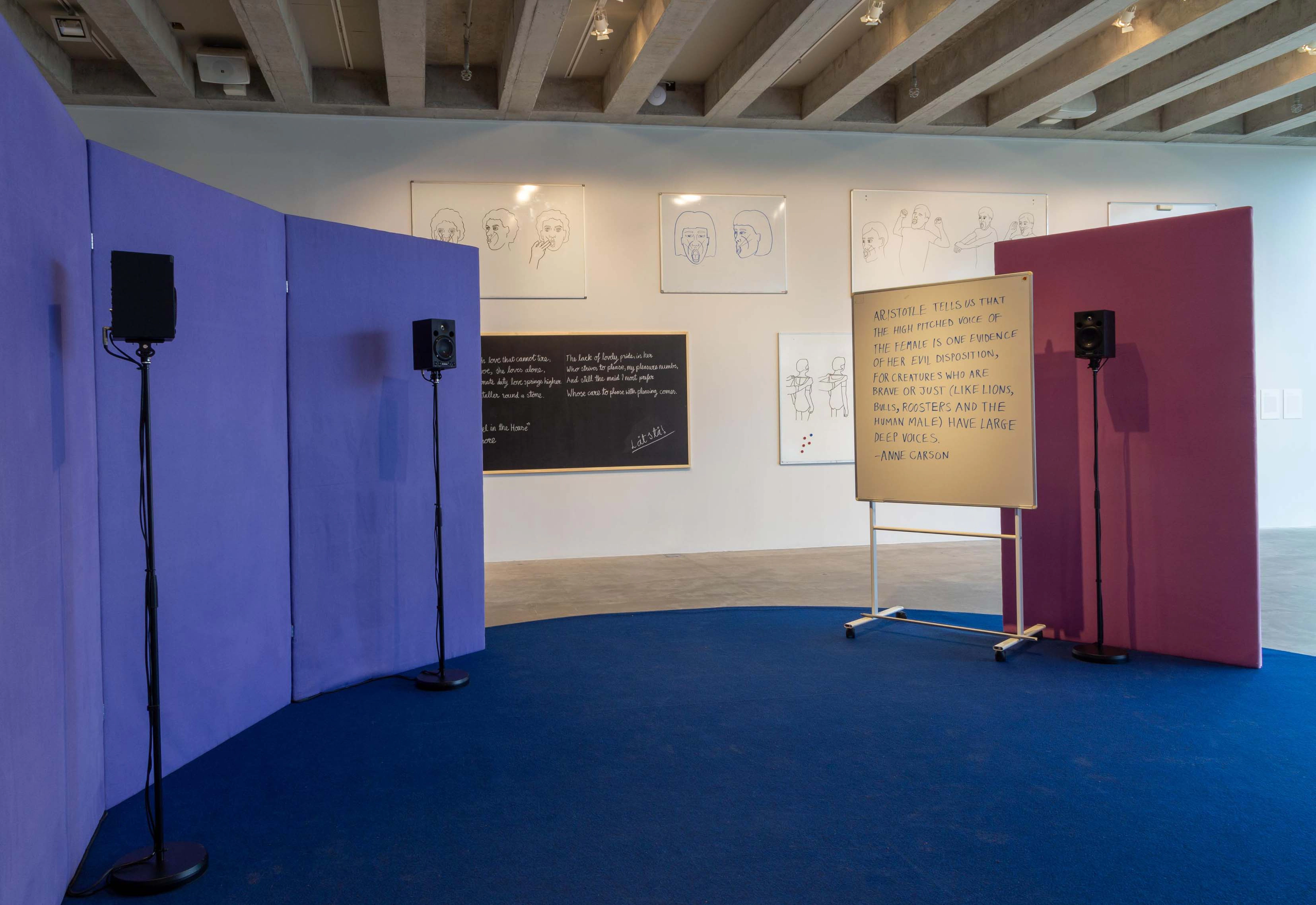
Mastering the Voice (detail), 2023
sound installation with carpet, speakers, flanellograph, black board and white boards
Mastering the Voice, 2023
sound installation with flanellograph and white boards
Made in collaboration with voice coach Irene Martín Guillén, the piece addresses how we learn to perform gender roles with our voice. The starting point is my own experience of undergoing speech therapy, following a virus that left me unable to speak for a year. In the piece we hear a group of women and gender non-conforming folk as they rehearse voice exercises, which subtly make audible some of the ways in which we learn to perform gender norms and questions medical ideas of the ‘natural voice’.
Mastering the Voice, 2023
sound, 14 min. 32 sec.
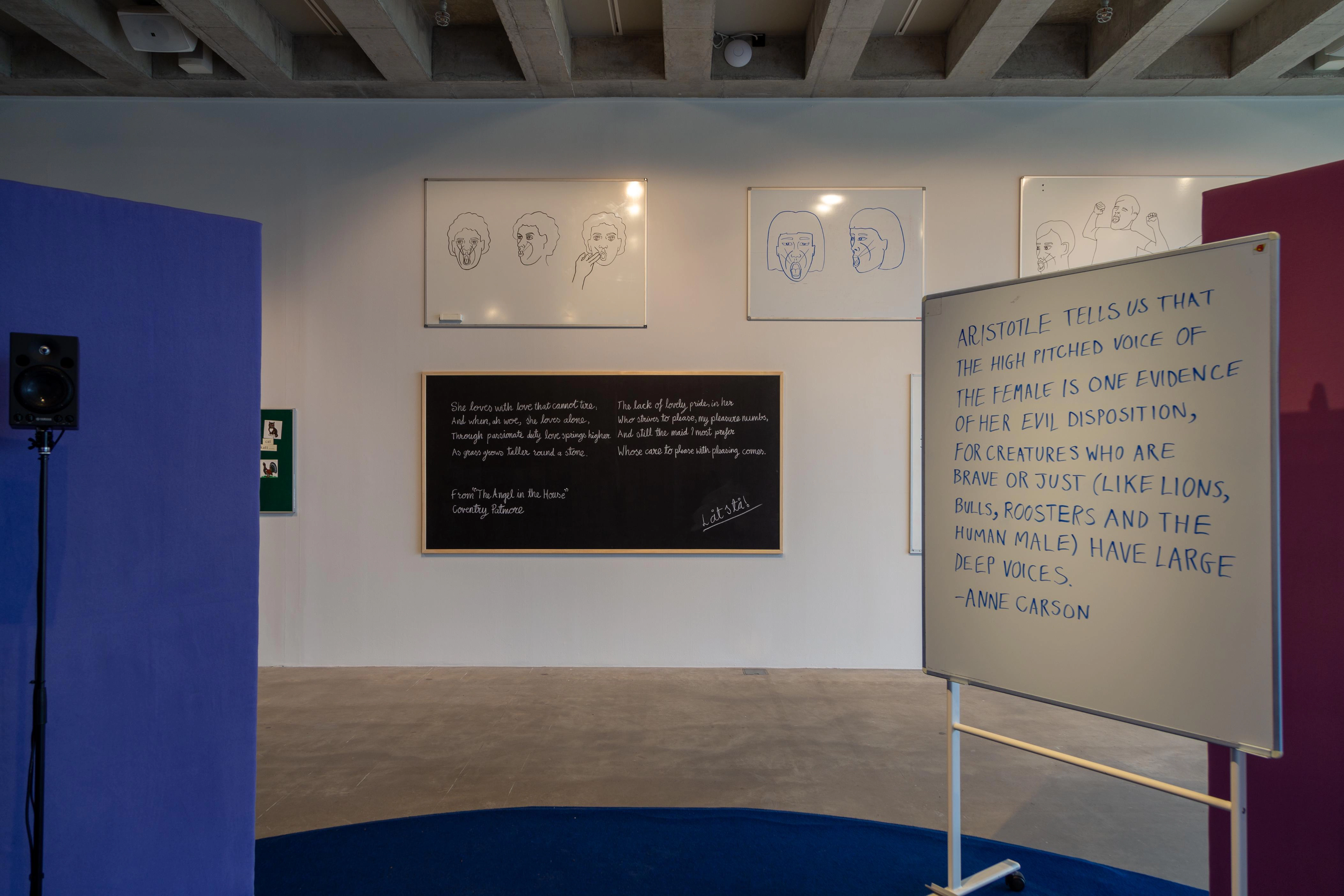
Mastering the Voice (detail), 2023
sound installation with carpet, speakers, flanellograph, black board and white boards
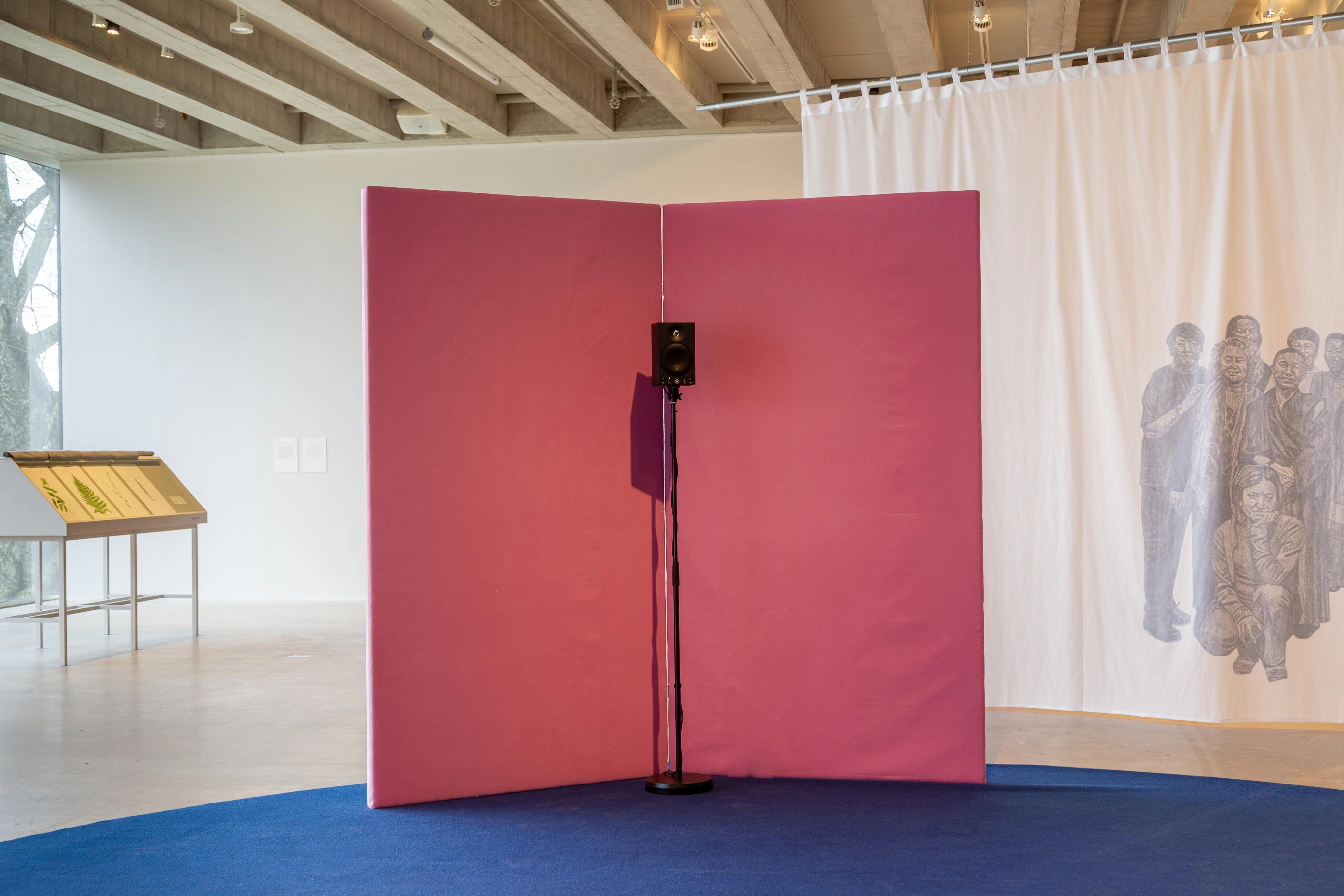
Mastering the Voice (detail), 2023
sound installation with carpet, speakers, flanellograph, black board and white boards
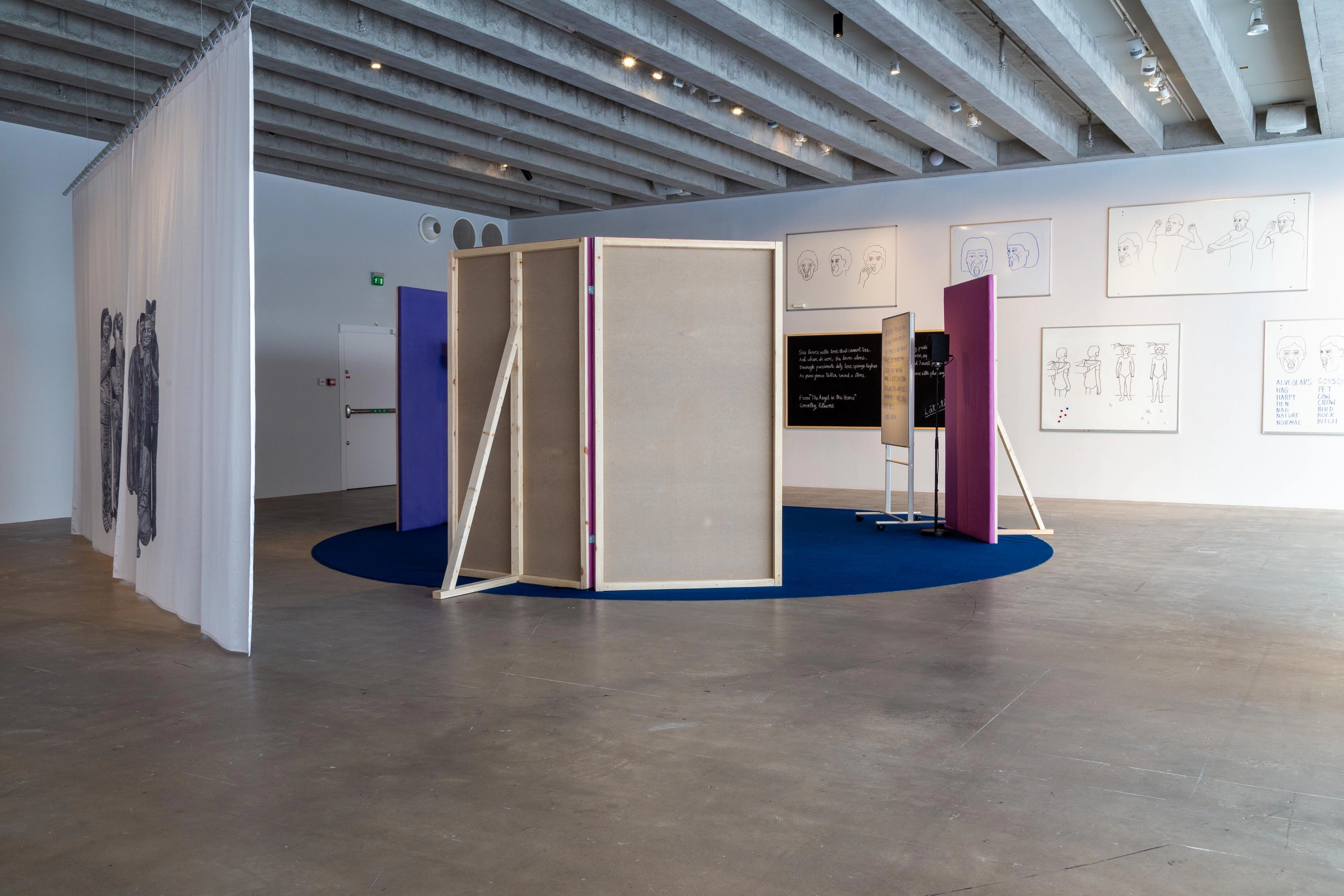
Mastering the Voice, 2023
sound installation with carpet, speakers, flanellograph, black board and white boards
Many of the exercises are based on The Angel in the House (1854–62), a nineteenth century poem by Coventry Patmore. It celebrates the housewives who devote themselves to the comfort of their husband and master, limiting the scope of their ambitions to the private domestic sphere. The group slowly begins to rebel against the constraints of the exercises with their voices, choking on their words, speaking at a hysterically high pitch, or cackling like witches.
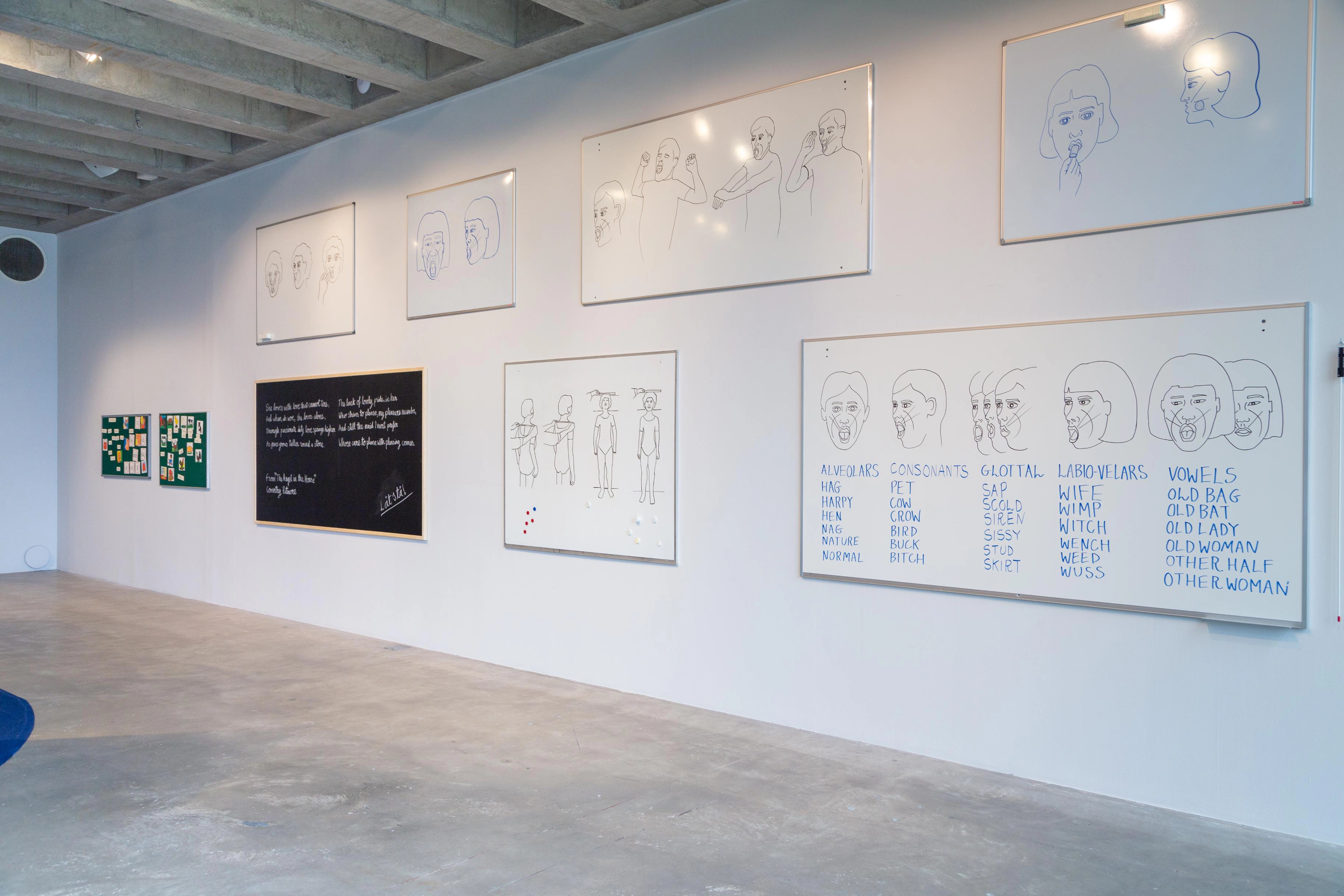
Mastering the Voice (detail), 2023
sound installation with carpet, speakers, flanellograph, black board and white boards
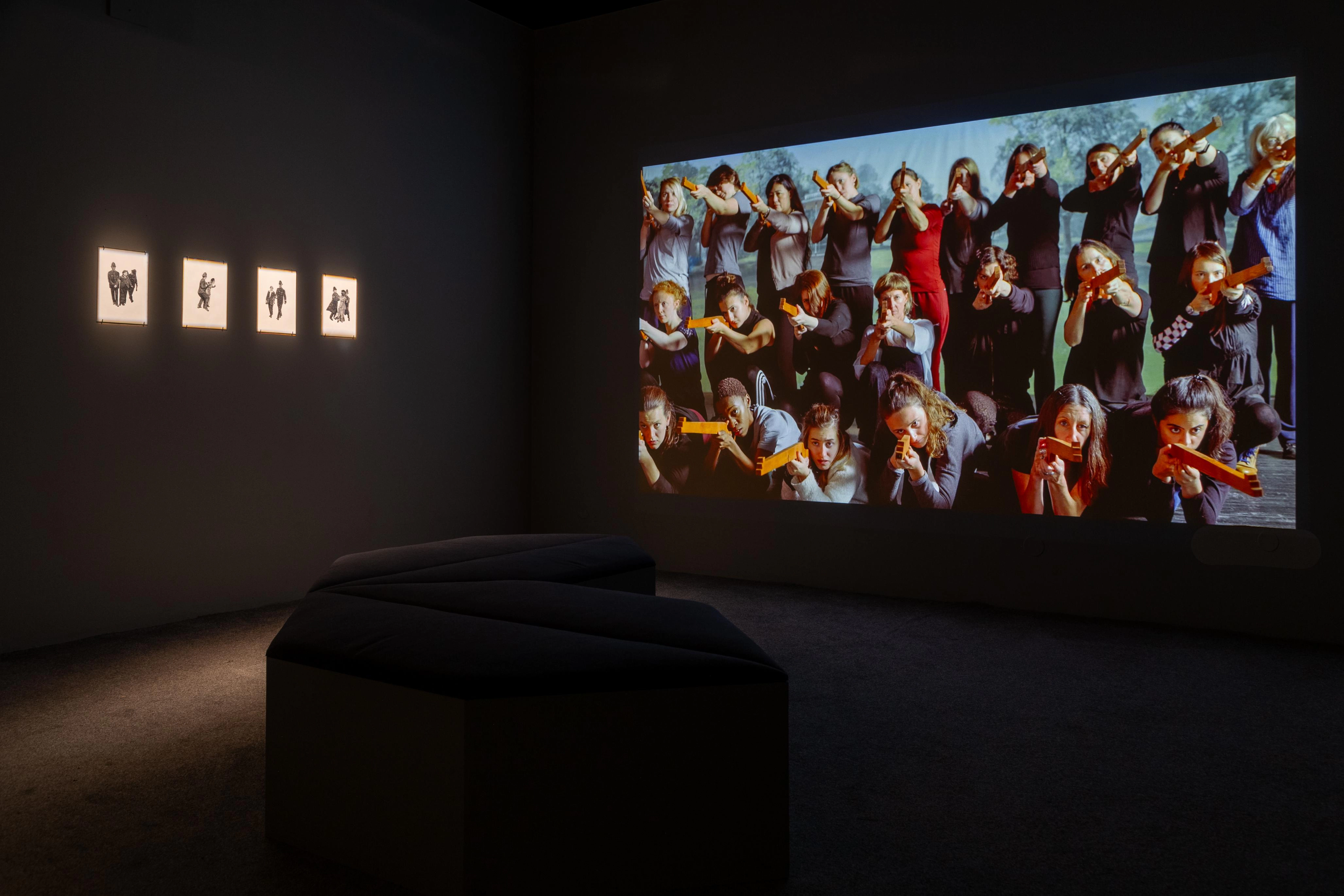
Hold Hold Fire, 2019
installation view with two-channel video and series of drawings, Kalmar konstmuseum, 2023
Hold Hold Fire, 2019
video installation and drawings
The camera follows the actions of a group of contemporary women as they engage in a self-defence class. The video dwells on the bodily and collective tactics women can learn to resist everyday violence, as well as police aggression, and take ownership of a situation. In the two-channel film, we see the women struggle to overcome the taboos surrounding female aggression and anger. As they rehearse movements and practise Jiu-Jitsu throws, the participants build up to a recreation of an archival photograph of The People’s Army – a self-defence group that was part of the East London Federation of the Suffragettes (ELFS) – posing with guns in a public park in London, circa 1914. The video’s ultimate image is something like a tableaux vivant, or a moving history painting, which takes place in front of a painted theatrical backdrop of the park.
Hold Hold Fire was first shown at the 34th Bienal de São Paulo in 2021.
Hold Hold Fire, 2019
video, 11 min. 36 sec.
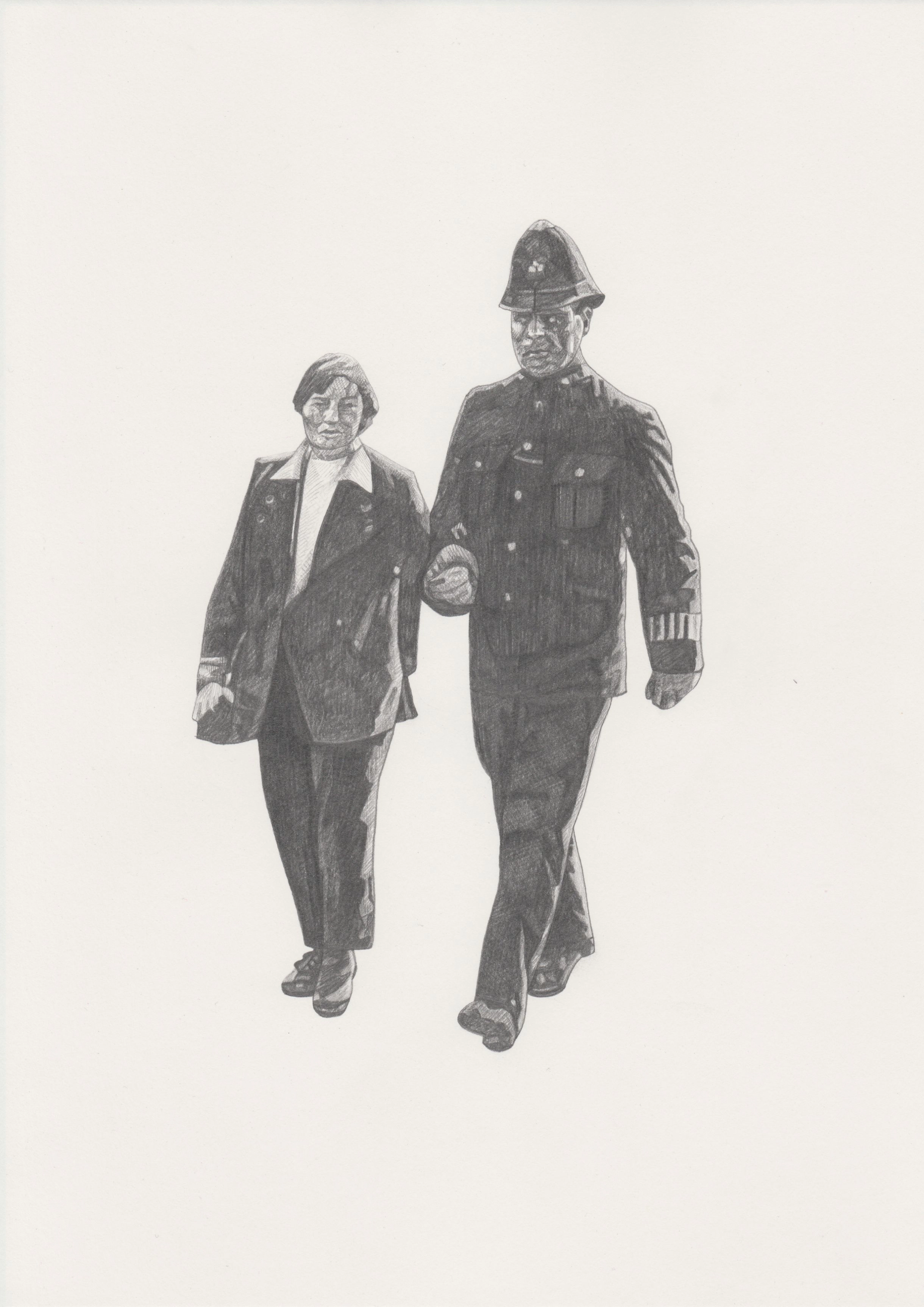
Arrest!, 2023
pencil on paper drawing, 21 x 29.7 cm

Arrest!, 2023
pencil on paper drawing, 21 x 29.7 cm
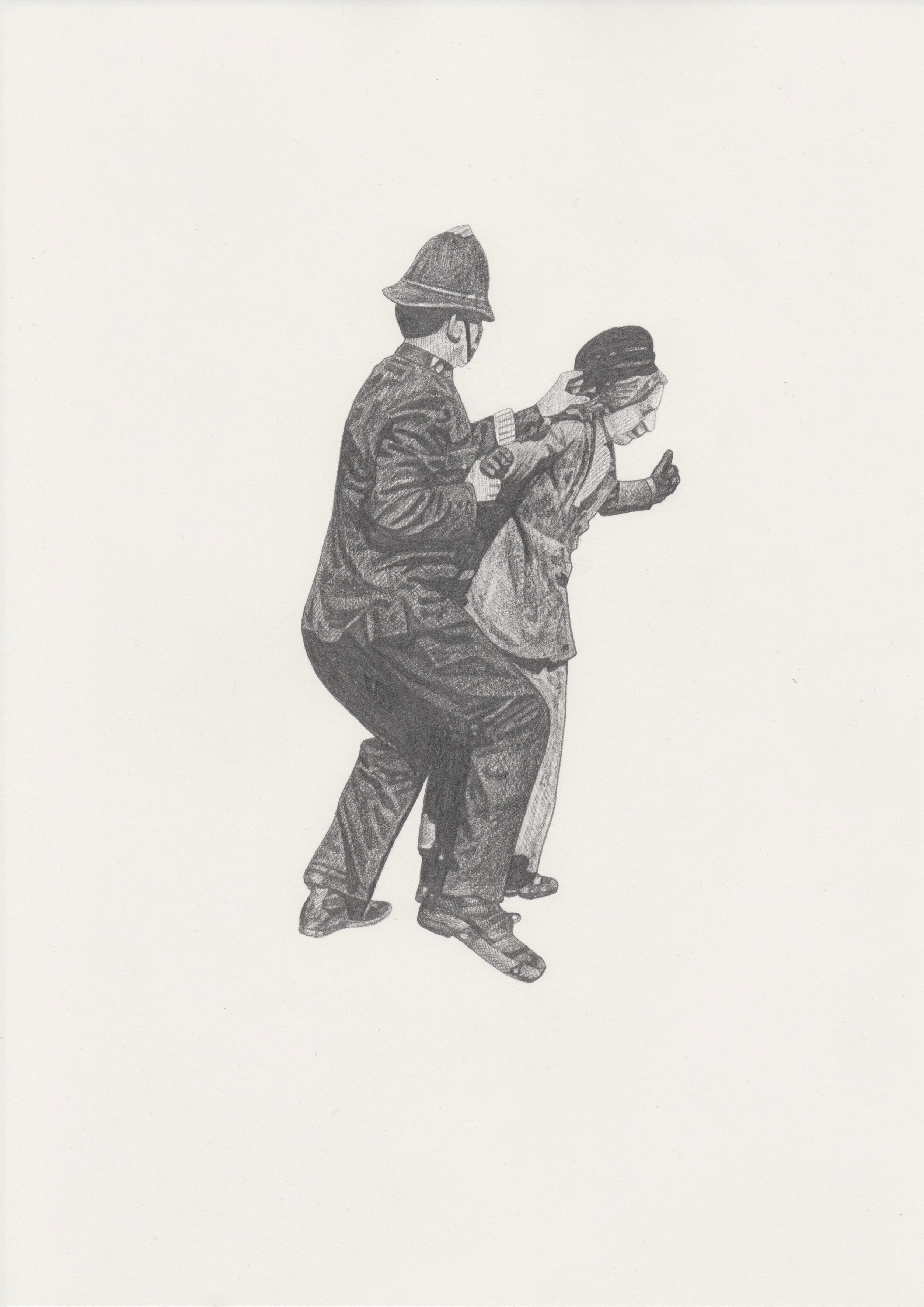
Arrest!, 2023
pencil on paper drawing, 21 x 29.7 cm
Arrest!, 2023
pencil on paper drawings
The pencil drawings which accompany the video installation are based on early twentieth century press photographs of suffragettes being apprehended by the police. These women are shown in all their individuality, whereas the identities of the men are masked by their uniforms.
Further Reading
‘Hag Nag Harpy Hen’, Kalmar konstmuseum, Sweden, 2023
(view here)Glean, ‘The Artists' Library’, Olivia Plender interviewed by Els Roelandt, #Eng 2, December 2023
(read)